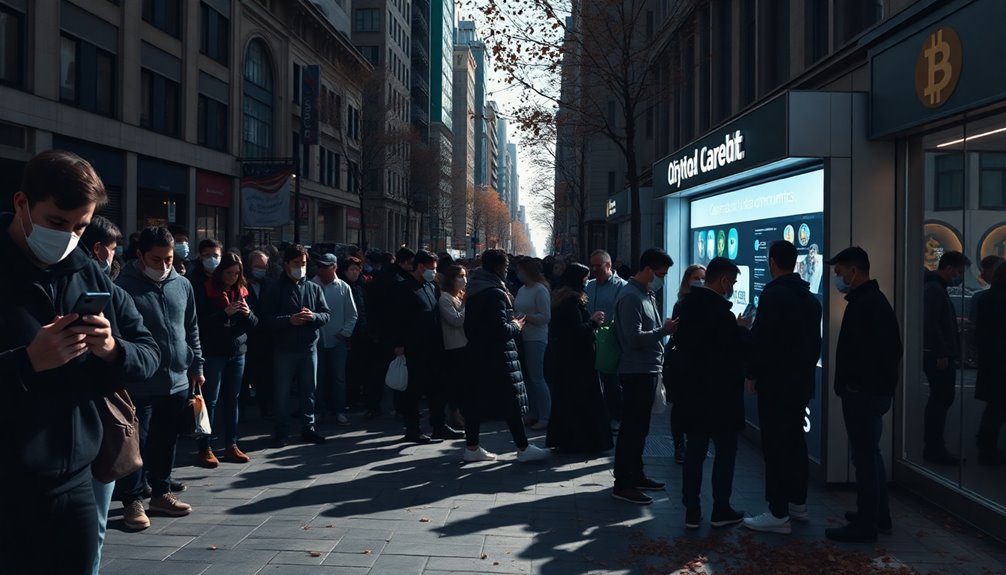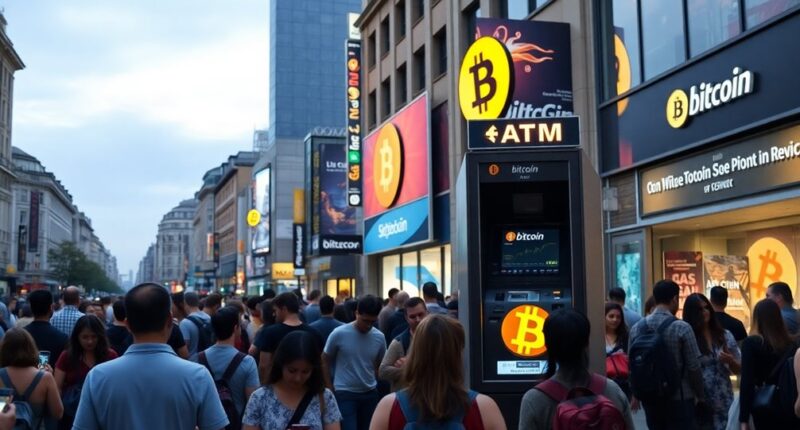You've probably noticed a significant drop in Bitcoin retail participation over the last three months. With price uncertainty and a stable market structure, many small investors are holding back, waiting for clearer signals. This cautious approach stands in stark contrast to the growing interest from institutional investors. What's behind this shift, and how might it affect the future of Bitcoin? Let's explore the factors at play.

As Bitcoin's price edges closer to all-time highs, you might expect retail participation to surge, but recent data reveals a 19.34% drop in demand from small investors. This decline is surprising, especially given the bullish sentiment driving the market. You might think that as prices rise, more small investors would jump in, but the reality tells a different story.
Retail on-chain activity, particularly transactions under $10,000, has significantly decreased, highlighting a lack of interest from smaller players. Historically, periods of high volatility have drawn retail investors in droves, but this time seems different. Many small investors are cautious, possibly due to the uncertainty surrounding Bitcoin's price movements as it approaches those all-time highs. The current market structure appears stable, suggesting that high volatility may not be the driving factor to spur retail participation this time.
You might find it unsettling that despite the surge in institutional investment, which has been instrumental in driving prices upward, retail participation has fallen off. It appears that small investors are waiting for clearer signals before committing their funds.
You'll notice that retail interest often spikes during brief moments of euphoria, but those moments are becoming fewer and farther between. For instance, the surge of interest when Trump's meme coin launched was short-lived, illustrating how fleeting retail enthusiasm can be.
Google Trends data backs this up—while there's been an uptick in search interest for Bitcoin-related terms compared to last year, it still falls short of the euphoric levels seen in previous cycles.
This decline in retail participation isn't all doom and gloom, however. Analysts still view the market structure as healthy despite the dip in small investor engagement. In fact, periods of reduced retail activity have historically preceded sustained uptrends.
With institutional investors increasingly supporting Bitcoin's price, you might see this as an opportunity for long-term accumulation. Once retail investors regain confidence, their participation could amplify Bitcoin's upward momentum.
Historically, you've seen retail activity re-enter the market when prices start gaining traction, suggesting a potential comeback is on the horizon. Even now, the low transfer activity among retail investors could signal a brewing positive shift.
As Bitcoin remains in a consolidation phase, struggling to break through the $100K barrier, a breakout above that level could reignite retail interest, ushering in a new wave of participation.









